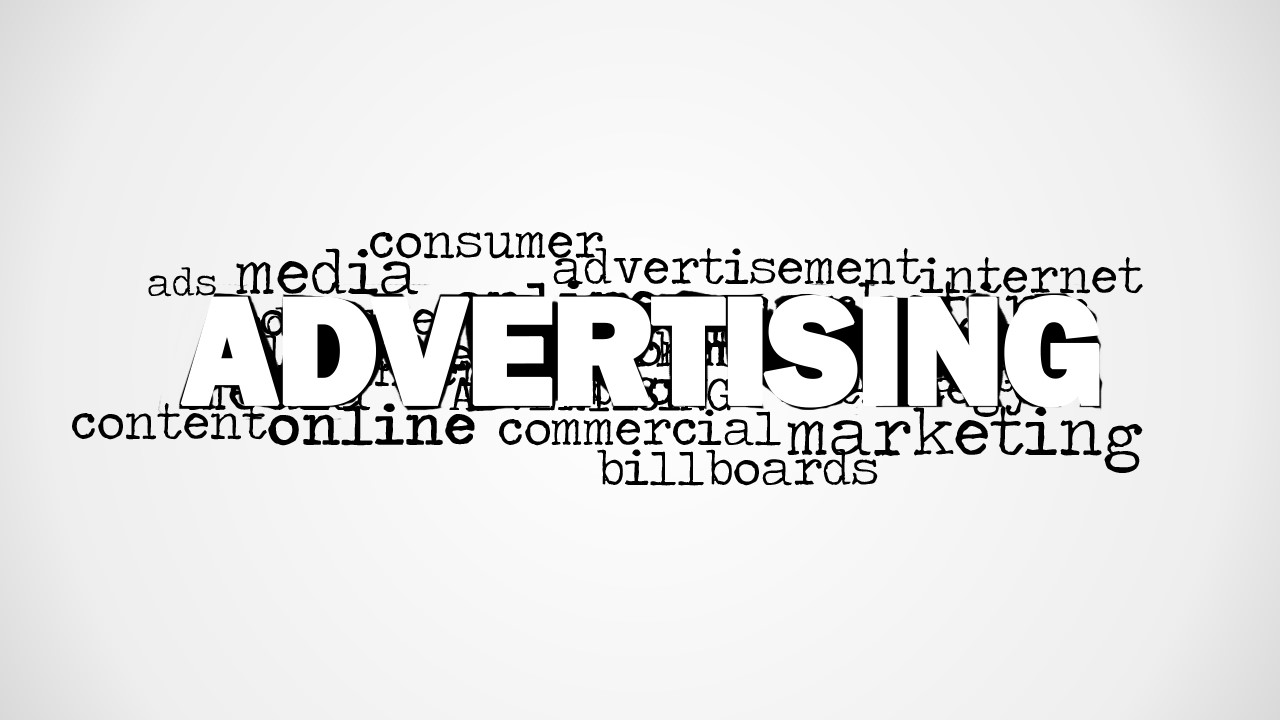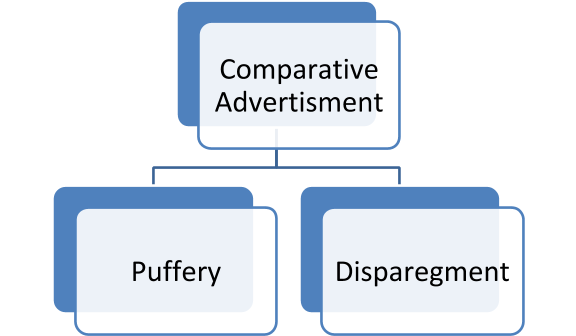This article is written by Kashish Sethi from Delhi Institute of Rural Development, GGSUIP.
Table of Contents
Introduction
With advancing technology and competition amongst the brands, they will go the extra mile to achieve their target sales and to expand their business with the help of advertising on all platforms. Television and social media are great influencers in ordinary people’s lives as they spend a lot of time on it. Hence, it is the best method to reach the audience at large. It relies on the promoter of the brand how they will pull buyers to feel the warmth of the product and win their trust. However, to retain their image and position in competitive market brands tend to make comparisons of their product and service with those of homogenous brands to boost their sales. Sometimes advertiser tends to hamper the image by misleading or signifying untrue statements about a competitor by disparaging it which leads to a civil wrong which is known as comparative Disparagement.
What is a comparative advertisement?
Comparative advertising is the main strategy that is mostly used by companies to showcase their product as superior to the competitor product. This technique of promoting their brand and increasing the sale with the help of comparing their product with a competitor’s product by way of advertisement is known as a comparative advertisement. Comparative advertisement is essentially done by making a reference to the contender’s product directly or indirectly.
Comparative advertisement can be divided into two categories
-
-
-
- Puffery
- Disparagement
-
-
Comparative Advertisement is permissible so long as such comparison does not disparage or denigrate the trademark or products of a competitor. They might additionally claim that their product is ‘superior to anything’ or on ‘standard with the competitor’s product’.
What is meant by puffing an advertisement?
Puffing is a technique of exaggerating good qualities by using a catchy line or by claiming their product to be best. Puffery is done when the advertisement oversells its claims and advantages of the given product. This helps the advertiser to show how highly functional the product is by making inflated claims.
Puffery is a promotional statement or claim that expresses subjective rather than objective views, which no “reasonable person” would take literally. Puffery serves to “puff up” an exaggerated image of what is being described and is especially featured in testimonials.
The manufacturer is allowed to declare his goods to be better than his rivals or best in the world. Whereby such means, the advertiser targets to show how highly effective the product is by making puffed-up claims. For example, Fevicol ka mazboot jod hai Tootega Nahi!” by Fevicol, “Tide Hai Toh White Hai” by Tide.
In De Beers Abrasive v. International General Electric Co., a judgment that highlights on false advertising causing harm to a rival’s trade, to uphold that a trader can puff up or declare his own goods to be the best; he can also puff up to claim that his product and service is better than the rival’s, but such puffing should not denigrate, discredit or disgrace the products of his rival.
Reckitt Benckiser (India) Pvt Ltd v. Gillette India Ltd
In this case, the Hon’ble court observed the meaning of ‘Puffing’ as the concept of exaggerating the claim of the product but without any false statement to mislead consumers. Puffing did not involve showing the competitor’s product in a bad light.
What is disparagement and how is the comparative advertisement disparage a competitor’s product?
-
-
- The tort of disparagement occurs when derogatory (Disrespectful) statements are made about a person’s business or a person’s title to his or her property with the purpose of discouraging others from dealing with the person.
- The main intention of disparaging a competitor’s product is to cast doubt upon the existence of another’s property whether tangible or intangible or upon its quality. It leads to disparage the good or services of the competitor’s good by doing directly or indirectly refer to the competitor product and showing them in a negative light.
- In a disparagement suit, the court has to examine whether the advertisement is highlighting the benefits of the product or denigrating the competitor’s product which would amount to creating a negative image in the market.
- In case of Heinz India (P) Ltd v. GlaxoSmithKline Consumer Healthcare Ltd where a TVC showing a disparaging message conveyed by the defendant in the advertisement by comparing two products Complan and Horlicks highlighting the competitor’s product MRP and making disparaging remarks against Complan in regard to nutrients and health value comparison to the appellants. The lower price of the product is sought to be attributed to use of cheaper and inferior quality ingredients and the question posed is whether the cheaper price or a child’s complete growth is important while choosing a healthy drink.
-
Elements of disparagement
To define a Disparagement in a particular Commercial we have to keep the following factors in mind namely;
- Intent of commercial
- Manner of the commercial
- The storyline of the commercial and the message sought to be conveyed by the commercial.
In Pepsi Co., Inc. And Ors. V. Hindustan Coca Cola Ltd. And Anr, the defendant in this case i.e., Coca Cola Denigrates the Competitor’s Product “PEPSI” as inferior bypassing the statement “Bachhon Wali Drink” and the same is mocked at in the commercial and the message is “that the kids who want to grow up should drink “Thums Up.” The storyline the advertisement conveys “Thums Up” is better than “PEPSI”, which is sweet and meant for small children and not grown-up boys. The statement in itself is denigratory.
Disparagement is also possible even if there was no direct reference to the product of the plaintiff and only a reference was made to the entire class of product in its generic sense. Disparagement of rival products without specifically mentioning or pinpointing the rival product is equally objectionable which is known as GENERIC DISPARAGEMENT.
Dabur India Limited v. Emami Limited
In this case defendant, itself is manufacturing and marketing chyawanprash which is an ayurvedic product and comes under Class 5 of generic product which is being used in winters made a general statement was made in the television commercial which clearly states that consumption of chyawanprash is not advisable during the summer season and defendant Product is an effective substitute of chyawanprash.
Being ‘chyawanprash’ a generic word and there is no exclusivity which could be claimed to the same no malafide statement was passed in the advertisement against the plaintiff product i.e., Dabur India Ltd.
It was observed that presence of plaintiff’s product is more in the market in comparison to the defendant any direct reference to the product or only reference is made to the entire class of chyawanprash in its generic sense, even those circumstances disparagement is possible as it will hamper the image of Product in the market.
Triple test for disparagement in a commercial advertisement
Reckitt Benkciser (India) Ltd. V. Hindustan Unilever Ltd
In this case, the court has culled out the following principle in order to satisfy the test of Comparative Disparagement, which the plaintiff has to establish a key element in the case of comparative Disparagement.
- A false or misleading statement of fact about the product.
- The segment is deceiving or has the potential to deceive, the substantial segment of prospective consumer
- Deception is likely to influence consumer’s purchasing decisions.
- The court will take into account the intent of the advertisement, its manner, and the effect of the telecast of such a television commercial. The manner in which it has been telecast plays prime importance and the same should not be in the manner to ridicule or condemn the product of the competitor, resulting in disparagement.
Is defamation the same as disparagement?
While defamation is a criminal offence which governs under Section 499 of Indian Penal Code and Disparagement is a civil wrong which comes under the category of tort which is not a criminal offence.
According to IPC, Defamation is defined Whoever, by words either spoken or intended to be read, or by signs or by visible representations, makes or publishes any imputation concerning any person intending to harm, or knowing or having reason to believe that such imputation will harm, the reputation of such person, is said, except in the cases hereinafter expected, to defame that person.
To establish defamation under S.499 IPC following things have to be proved in the court of Law:
- Statement Must be Defamatory
- Must Refer to the Plaintiff
- The statement must be published
The conduct of defamation comes with certain exception out of which the relevant for the advertisement could be ‘It is not defamation to make an imputation on the character of the another provided that the imputation is made in good faith for the protection of the interests of the person making it, or of any other person, for the public good.
Disparagement is done to protect a business’s stakes in a market while Defamation is to protect reputation.
How comparative advertising actually works and its Constitutionality in India
An average person spends 1-4 a day on television or on social media. Advertising over television or on social media serves great profitability because it influences user choice by showing them the new product available that this person is watching. It attracts consumers psychologically, visually, and culturally. Advertising influences our subconscious by filtering the logical mind that protects the brain. For Example ‘Complan claims it is “clinically proven” that it aids “2x faster growth” in children’
Advertising does not only spread information about various products available in the market, but it will also make us feel different from other brands, transferring our feelings. This is called emotional Condition. A psychological emotion which involves associating a bad brand with many positive brands to change feelings towards the brand. The most powerful type of advertising creates a positive feeling about a product or brand by surrounding it with other things that the public likes.
An advertisement has been given Constitution protection under free speech Article 19(1)a on grounds of public awareness. It needs to be checked that these advertisements are neither deceptive, not disparaging any competitor’s product.
Tata Press vs. Mahanagar Telephone Nigam Ltd
In this case, the court held that advertisements are not only profiting the producers but there is a free flow of information in the free market economy fulfilling the greater goal of public awareness.
Dabur India Ltd. v. Colortek Meghalaya Pvt
Supreme court, in this case, culled out following principles as per constitutionality of comparative advertisement:-
- Advertisement is Commercial Speech which is protected under Article 19(1)(a) of the constitution.
- It should not be false, misleading or deceptive in nature.
- There should be some grey area to glorify one’s product but should not be a serious representation.
Sometimes Advertiser glorifies their product in the advertisement and use techniques which may mislead the consumer by Making False promise, incomplete Descriptive, Misleading Comparison, Bait and Switch offer, Visual Distortions, False Testimonials, False Comparisons or Laboratory Applications which is not permissible under fundamental right to free speech.
Hindustan Unilever Limited v. Gujarat Co-Operative Milk Marketing Federation and Others
In this case, the court reiterated that Article 19(1)a cannot be abused to malign, discredit or belittle a rival manufacturer’s product by a negative campaign. Indulging in vicious, false, and misleading statements against any competitors are not tenable and cannot be allowed.
ASCI
Advertising Standards Council of India (ASCI) a self-regulatory voluntary organization that deals with disputes in advertising. The ASCI code aims at achieving fair advertising practices by controlling the content of advertisements by overlooking all associated groups involved.
ASCI ensures that the practice of comparative advertisement is conducted in a proper way by identifying and controlling the content. It makes sure that producers should not take undue advantage over the competitor’s product.
ASCI laid down following guidelines to achieve healthy advertising practice in Indian scenario of the market:
- To safeguard against the indiscriminate use of advertisement.
- To ensure the truthfulness and honesty of claim by the advertisement and it should not be a misleading advertisement.
- To ensure it is not an offensive advertisement.
- To ensure fairness in competition in the market so that consumers are informed about choices available in the market.
However, being a voluntary organization, the code is not obligatory and compliance with the code is this optional.
Statutory framework of comparative advertisement in India
- In India legal Framework governing comparative Advertising, has been shifted from Monopolies to encouraging Competition. The basic legal structure has been laid down by Monopolies and Restrictive Trade Practice Act, 1969 and Trade Mark Act, 1999.
- Section 36A MRTP provides the indication on which comparative advertisements work. Any representation which Disparages and represent false information will be considered as comparative advertisement. In 2009 MCA repealed MRTP and replaced it with Competition Act, 2002. But in the current Competition Act, there is no proper definition for the concept of unfair trade practices but it solely depends on the consumer Protection Act.
- Trade Marks Act, 1999 states that comparative Advertisement is permissible to some extent i.e. honest use does not take unfair advantage of the trademark and not damage its distinctive character.
- Section 29(8) of Trademarks Act, deals with situations when a registered trademark is infringed by any advertising when the advertiser takes unfair advantage of the trademark and damages the distinctive character of competitor’s product in the market.
- Section 30(1) of Trademarks Act, Shows a comparative advertisement does not lead infringement of a particular trademark when it has been used in accordance with ‘honest practice’ in the industrial or commercial matter and does not mean to damage the reputation of competitor’s product by unfair means.
Havells India Ltd & Anr v. Amritanshu Khaitan & Ors
In this case, the defendant compared his product i.e. Eveready LED Bulb with competitor’s product Havells LED Bulb by showing the difference in their product on the basis of one feature which is lucrative which show’s their product is effective as compared to competitor’s product.
The court stated that the main objective of section 29(8) and 30(1) of the Act, 1999 is to allow comparative advertising as long as the use of competitor’s mark is honest. The advertisement has to pass through the test of honesty and it cannot mislead. Hence, it is no disparagement.
Relief Available
Civil Suit for disparagement and Recover Damages
- Legal Remedy which is available in the case of Disparagement can file a civil suit for Disparagement and claim to Recover Damages.
Exception to Disparagement
- Defence of Honesty in comparative advertisement
- Statements were made as an opinion and not amount to any action.
- Punitive Damages are normally not granted by the court but in cases of exceptional disparagement the court may grant the same can be granted.
Reckitt Benckiser India Limited V. Hindustan Unilever Limited
In the case, the court granted a decree of an injunction and punitive damages to extent of Rs. 5 Lakhs against the defendant’s advertisement which is disparaging Reckitt Benckiser ‘s goodwill and reputation sold under its Mark ‘Dettol’ which is in the market over 70 years by showing deceptively similar to plaintiff’s in the advertisement.
Apply for Injunction
The first step which companies take in the case of disparagement is to file a suit for injunction under Order 39 Rule 1 & Rule 2 to remove/Stop the advertisement from telecasting on television or to remove the specific part in which the disparaged product has been shown in the advertisement.
Frankfinn Aviation Services Pvt. v Akash Gupta
In the case, the court by deciding the application under Order 39 Rule 1 & 2, states that a manufacture is only entitled to compare and declare his product as best by elaborating advantages of good over other he cannot denigrate competitor’s product if he does so the person is entitled to an injunction against other if it leads to denigrate the goodwill of the business and can seek for relief of damages for defamation.
The court has to go through court have to go throw a triple test for the grant of an injunction:
- If there is a strong prima facie case to succeed
- If the balance of convenience lies in favour of the plaintiff
- Will the plaintiff suffer loss and injury if injunction not granted
Reckitt Benckiser (India) Ltd. v Hindustan Unilever Ltd
In this case, the defendant’s advertisement denigrates the plaintiff product by showing it in a bad image by showing a separate segment which is a descriptive replica of Plaintiff’s TVC which shows the plaintiff product is inferior.
Plaintiff i.e. Dettol filed an injunction for the removal of a specific segment in the advertisement which shows that the plaintiff’s product is inferior and makes the advertisement denigratory. After checking the prima facie case in which a separate segment has been shown and comparing both advertisements the court granted ad-interim injunction to remove the depilatory segment in the advertisement.
Godrej Consumer Products Limited v. Initiative Media Advertising
A suit for injunction is being filed against a visual advertisement which disparages plaintiff product “ALL OUT” by showing a label which is deceptively similar to the plaintiff being ineffective and useless. The defendant argued that the label which is being shown is disguised hence, not disparaging the product of the plaintiff. The court after comparing and examining both the labels came to the conclusion that the test of the balance of convenience and irreparable injury is in favour of the plaintiff and granted ad-interim injunction to remove the impugned mark from TVC.
Consumer Complaint Council
- ASCI being a regulatory body made for the purpose of regulating the advertisement to prevent misleading information in the market and to protect consumer’s rights. ASCI has constituted CCC where any person can lodge a complaint if there is any objectionable advertising is done. If CCC finds that the advertisement in question violates ASCI Code or any other law the advertisement will be withdrawn or modified.
- Any person can file a complaint by following the procedure mentioned on their website. :- https://ascionline.org/images/pdf/ccc_procedure.pdf
- A complaint can be filed by Industry on behalf of a consumer or it can be a suomoto taken by ASCI. Recently 110 advertisements were immediately withdrawn by the ASCI
Conclusion
To conclude, Comparative advertisement is mostly seen in FMCG companies where the advertiser of the company glorifies their product to win the customer’s trust and have more market share. Puffing is accepted to some extent as long as the rival’s goods are not denigrated. Though the scenario about comparative advertisement has developed significantly, a definitive ruling by the Indian Courts which settles the inconsistency in this regard is awaited. Being puffing is an essential element of advertisement the advertiser should advertise their products by keeping all the guidelines of ASCI and to Section 29(8) and Section 30(1) of Trademarks act in mind before making it. The advertisement should not infringe others property and should be used in accordance with honest practice. A Manufacturer of a disparaged product can complain and seek file suit for an injunction if there is any disparagement of their product in the market.
LawSikho has created a telegram group for exchanging legal knowledge, referrals and various opportunities. You can click on this link and join:
 Serato DJ Crack 2025Serato DJ PRO Crack
Serato DJ Crack 2025Serato DJ PRO Crack












 Allow notifications
Allow notifications



